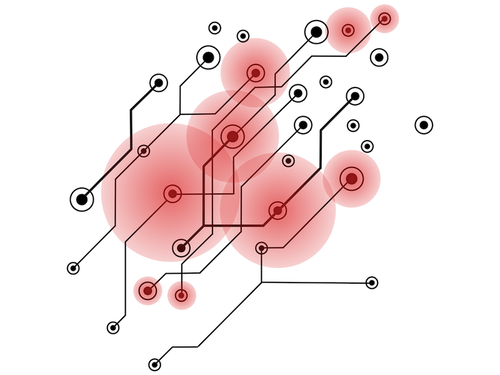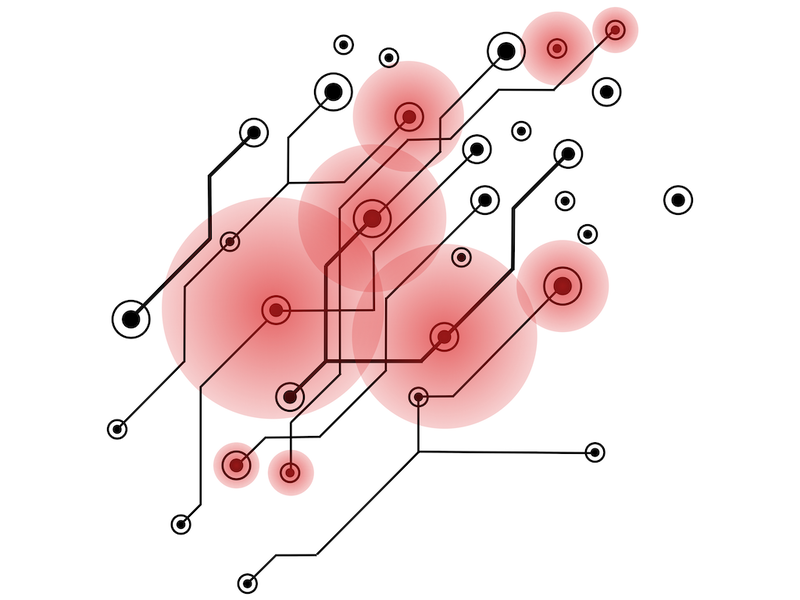A Cooler Computer
As computers continue to shrink, the energy required per computation decreases. But in the next few decades, digital devices will hit the theoretical limit for the minimum energy required for a single operation. Now Jan Klaers of the University of Twente in the Netherlands proposes a way to get around this limit using so-called squeezed thermal states. These states allow the computer to operate at an effectively lower temperature, where operations expend less energy. Klaers suggests that energy savings could be achieved with current computer technology by taking advantage of squeezed states that arise naturally in the thermal environment of a computer.
In 1961, the late Rolf Landauer, then of the IBM Thomas J. Watson Research Center in New York, developed a simple thermodynamic model of a digital bit: a particle confined to a potential energy curve containing two valleys (wells) separated by a barrier [1]. In the model, the 0-state corresponds to the particle inhabiting the left-hand well, while the 1-state corresponds to placement in the right-hand well. Landauer wondered how much energy would be required to erase the bit, which he defined as resetting it to the 0-state. He imagined removing the barrier, shoving the particle leftward with a piston, and then reinserting the barrier. He showed that the lowest possible energy cost of this process is about 0.7kBT, where kB is the Boltzmann constant, and T is the temperature of the surroundings. This erasing energy—which is dissipated as heat—is characteristic of the energy expended in any sort of digital operation performed on a bit. Experiments confirmed the Landauer principle in 2012 [2].
One of the assumptions in Landauer’s derivation is that the system is in thermal equilibrium. Recently, several research groups have shown that the Landauer limit may not hold when the bit is out of equilibrium [3, 4]. Klaers has developed a new strategy in which the bit remains in equilibrium, and instead, the surrounding environment (“heat bath”) is pushed out of equilibrium by thermally squeezing the bath. In general, squeezing means that noise-related fluctuations are distributed unevenly among the various dimensions of the system. For example, a mechanical oscillator in a squeezed state might have relatively small momentum fluctuations but correspondingly large position fluctuations. In the squeezed state that Klaers considers, the bath effectively oscillates between two temperatures: one above and one below the average temperature. “Depending on when you look at it, the bath is either hot or cold,” Klaers says.
To lower the energy cost of erasing the bit, one should perform operations—such as piston movement—when the bath is in its cold phase. A colder bath implies a colder particle, which exerts less pressure on the piston, so less work is needed to drive the particle to the left side. By synchronizing the operations with the temperature oscillations, Klaers found that the energy cost of erasing a bit has no lower bound: the more one squeezes the bath, the lower the energy cost.
Klaers argues that this technique could offer energy savings even for today's computer bits, which expend 1000 times more energy than the Landauer limit. And the advantage, he says, is that the squeezed thermal environment “comes for free” in modern computer systems. When a computation is performed, millions of bits end up being erased or switched in some way, and each of these operations releases heat. These heat emissions occur at the frequency dictated by the CPU clock, so the bath’s temperature oscillates. These oscillations have a complex spatial pattern, but the behavior is still a form of squeezing. Klaers believes that engineers might be able to tailor this squeezing so that bits are operated upon when they are colder. Such thermal-oscillation-aware computation should expend less energy, but just how much less still needs to be investigated.
Nanophysics expert Eric Lutz from the University of Stuttgart in Germany says that erasing information always has a price. “Going far from equilibrium opens the possibility to choose how to pay that price,” he says. Klaers’ approach pays in the preparation of a nonequilibrium environment. But such environments are ubiquitous, says John Bechhoefer from Simon Fraser University in Canada, who has also worked on nonequilibrium strategies to beat the Landauer limit [4]. “I think [Klaer’s work] is useful in expanding our understanding of how to function efficiently in a nonequilibrium world,” he says.
This research is published in Physical Review Letters.
–Michael Schirber
Michael Schirber is a Corresponding Editor for Physics Magazine based in Lyon, France.
References
- R. Landauer, “Irreversibility and heat generation in the computing process,” IBM J. Res. Dev. 5, 183 (1961).
- A. Bérut, A. Arakelyan, A. Petrosyan, S. Ciliberto, R.Dillenschneider, and E. Lutz, “Experimental verification of Landauer’s principle linking information and thermodynamics,” Nature 483, 187 (2012).
- M. Konopik, A. Friedenberger, N. Kiesel, and E. Lutz, “Nonequilibrium information erasure below kTln2,” arXiv:1806.01034.
- M. Gavrilov and J. Bechhoefer, “Erasure without work in an asymmetric double-well potential,” Phys. Rev. Lett. 117, 200601 (2016).





